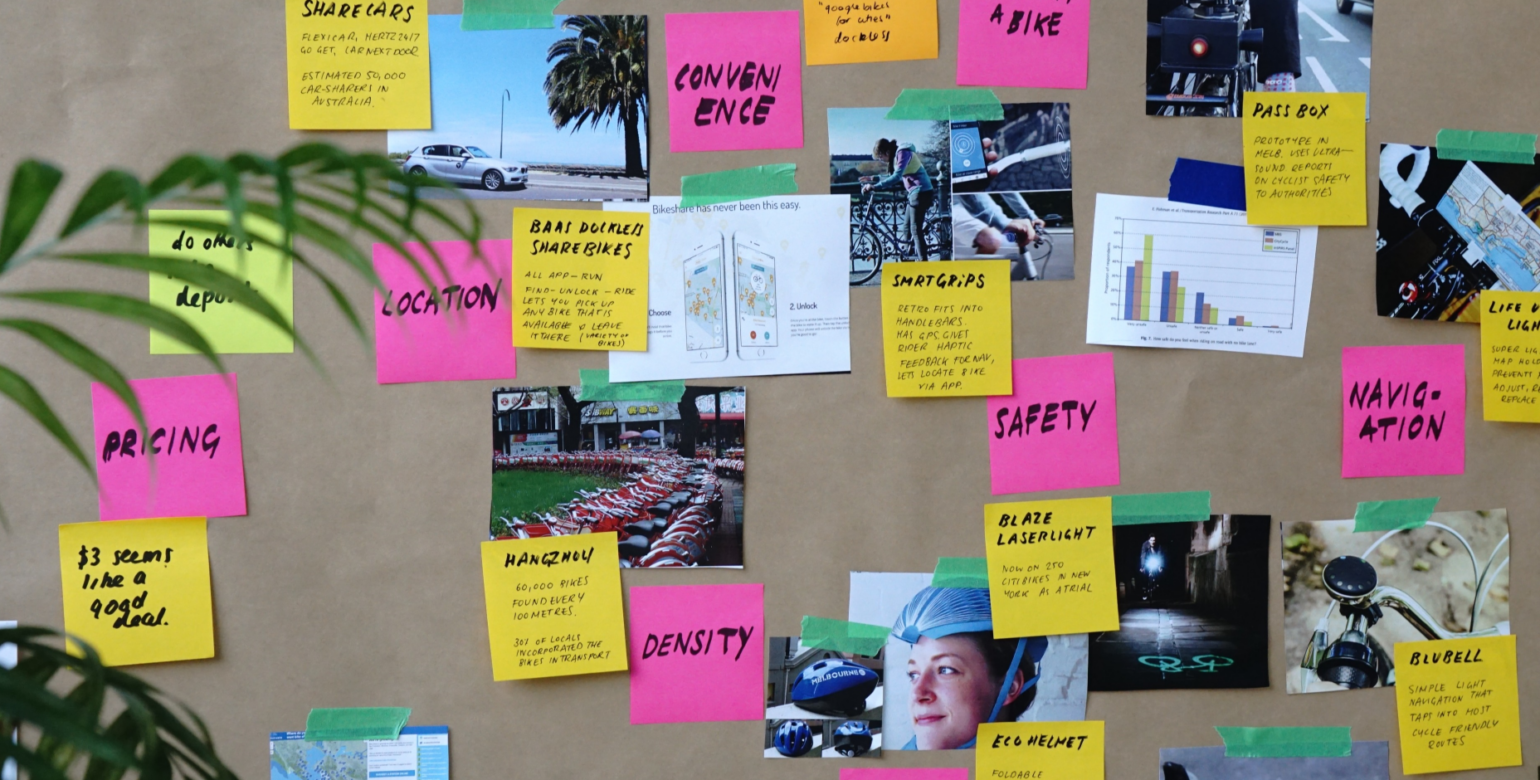Decoding SEO: Understanding keyword research, analysis, and on-page optimisation

Mihalis Tsiropoulos
SEO Operations Lead
So you’ve meticulously crafted your website and invested your time in creating compelling content, but the virtual tumbleweeds continue to roll by? Been there, done that. What’s missing? Well, you might’ve underestimated your keyword research and analysis. Happens to the best of us.
On the internet, keywords are your guiding compasses since they help your users explore and discover your website – which is why doing great keyword research and analysis is so important for online visibility.
This guide is our step-by-step approach to keyword research and analysis for optimal website performance, so read along!
1. Understanding keyword research and keyword analysis
1.1. What is keyword research?
Keyword research is the initial phase of the SEO strategy where you identify and compile a list of relevant keywords and phrases related to your business, products or services. The primary goal of keyword research is to understand the language and search terms your target audience uses. It helps in uncovering user intent and discovering the most relevant keywords that align with your business goals.
This phase involves brainstorming, using intuition and leveraging tools like Google Keyword Planner, SEMRush, Ahrefs, and others to generate a comprehensive list of potential keywords that are potentially relevant to your content and business.
1.2. What is keyword analysis?
Keyword analysis is the following step, where you go deeper into the keywords you identified to extract meaningful insights. In other words, keyword analysis is a study of which keywords or phrases are relevant to your business or your website and how they are used by your users. It involves assessing the performance, competition and strategic value of each keyword. The main goal of keyword analysis is to refine and prioritise the initial list of keywords that will be most effective for your content and SEO strategy.
Keyword analysis is essential because it allows you to understand what your audience is searching for and how you can optimise your website and content to meet your users’ needs. Therefore, in the keyword analysis itself, we are interested in identifying the keywords that are relevant to what we offer and at the same time prioritise them according to their performance.
Keyword analysis includes evaluating factors such as search volume, competition, user intent and the performance of competitors for each keyword. This often requires the use of more advanced SEO tools and analytics.
1.3. What is the difference between keyword research and keyword analysis?
Here are some of the key differences between keyword research and keyword analysis:
- Focus: Keyword research focuses on generating a broad list of potential keywords, while keyword analysis hones in on evaluating and prioritising these keywords based on various criteria.
- Timing: keyword research is typically an early-stage activity, conducted when planning an SEO strategy or developing content. Keyword analysis follows, refining the initial list to ensure strategic targeting.
- Tools and methods: keyword research involves brainstorming, intuition and basic keyword tools. Keyword analysis often requires more advanced tools and analytics to assess competition, search volume, and other metrics.
- Output: the output of keyword research is a preliminary list of keywords. Keyword analysis results in a prioritised and strategically refined list of keywords that are most likely to drive success in your SEO efforts.
1.4. Popular tools for keyword research and analysis
Here are some examples of popular tools for keyword analysis:
- Google Search Console: see which search queries your website triggers
- Google AdWords Keyword Planner: see which keywords have the most volume on Google Search
- SEMRush, Ahrefs, Accuranker: see which search queries your competitors’ websites trigger.
2. Six key steps in keyword analysis
Now that we understand the difference between keyword research and keyword analysis, let’s explore the 6 steps in keyword analysis that allow us to identify relevant keywords and optimise our SEO strategy.
Step 1: Define the purpose
Start by clarifying the purpose of your keyword analysis. Do you want to increase the visibility of your website in general, focus on specific products or services, or find new opportunities for content? By having a clear purpose, you can direct your analysis and efforts more effectively.
Step 2: Generate ideas
Brainstorm a list of potential keywords relevant to your website and purpose. Think about words and phrases that users are likely to search for when looking for content or products related to your website.
Step 3: Use keyword tools
Use keyword tools to expand your list of keywords and gain more insight into their popularity and competition. As mentioned, some popular tools include Google Keyword Planner, SEMrush, Ahrefs, and Accuranker. These tools provide data on search volume, keyword difficulty, and related keywords.
Step 4: Analyse the competition
Investigate which keywords your competitors are targeting. Identify keywords they rank highly for and research what they have as their content. It gives you insight into performance, strong keywords and opportunities for differentiation.
Step 5: Evaluate keyword relevance
Evaluate the relevance of each keyword in relation to your website’s content and purpose. Prioritise keywords that are most relevant and have the potential for high traffic and conversions. Also, consider the user’s intent behind the search to ensure you’re targeting the right keywords.
Step 6: Analyse keyword volume and competition
Assess search volume and competition for each keyword. Search volume shows how many times a keyword is typically searched for, while competition indicates how difficult it is to rank high for that keyword. Choose keywords with an appropriate balance of search volume and competition based on your goals and resources.
Once you have identified the relevant keywords, you are ready to implement them strategically in your content.
3. Keyword implementation
You’ve located and prioritised all of your keywords. Great! In the following section, we will briefly look at where and how we best incorporate these keywords into your website’s content and across your landing pages.
3.1. Keyword-optimised Meta-data
Meta-data on a website is information provided to search engines and other systems about the content of a specific landing page.
- This often includes elements like title tag, meta description, canonical tag, header tags, alt text, XML sitemap, robots. txt, and structured data,
You will often find that Google uses and reproduces Meta-data in results from the search engine. Meta-data must therefore be attractive to users to achieve a high click-through rate and engage users. In other words, it is important to adapt your Meta-data to each landing page to optimise user experience and SEO.
3.2. Keyword-optimised headings
Structuring your website’s content is a great way to optimise your keywords. A heading tag on a website is used to define headings and subheadings that structure and organise the content. Heading tags using HTML are listed from H1 to H6, with H1 being the highest and H6 being the lowest in the hierarchy.
- The H1 tag is normally used for the title of a page and should only appear once per page. It is the most important heading tag and signals to search engines that this is the primary heading for the page.
- H2 to H6 tags are used for subheadings or secondary headings on the page. H2 is usually used for the main section headings, followed by H3, H4, etc. depending on the sub-levels of the hierarchy.
Optimising heading tags can help both users and search engines understand the structure and relevance of the content. Here are some tips for optimising heading tags:
- Use relevant keywords: Insert relevant keywords into your heading tags to signal the topic of the content. This helps search engines understand what the page is about and can affect your rankings in search results.
- Maintain hierarchy and structure: Use heading tags in the correct order and keep hierarchy and structure consistent. H1 should only be used once as the primary heading, followed by H2, H3, etc. in logical order.
- Be precise and descriptive: Write informative and descriptive headings that clearly communicate the content of that section. This helps users understand what to expect when reading the section.
- Make it easy to read: Make sure your heading tags are easy to read and visually appealing. Use appropriate typography, size, and formatting to separate headings from the general body text.
- Avoid over-optimisation: Avoid overstuffing your heading tags with keywords or repetition. Use the keywords naturally and focus on creating a meaningful and user-oriented experience.
- Optimise for mobile devices: Remember to optimise your heading tags for mobile viewing. The headings must be easy to read and fit the screen size of different devices.
Remember that optimising heading tags is part of a broader SEO strategy. It is important to provide valuable and relevant content on your website and ensure a good user experience. Heading tags help organise and present content in a way that makes it easy for both users and search engines to understand and navigate your website.
4. Quality content and E-E-A-T
4.1. What is quality content?
Quality content on a website is valuable, relevant and engaging for users. It meets users’ needs, answers their questions or solves their problems in an informative, comprehensive and credible way. Above all, one should strive to serve unique content.
Here’s a non-exhaustive checklist of what quality content should be:
- Relevance: Quality content is relevant to the target audience and related to the topic or purpose of the website. It must address users’ interests and needs in a meaningful way.
- Unique and original: Avoid copying or repeating content from other sources, but instead use resources to become an expert in your field.
- Accuracy and reliability: Quality content is based on reliable sources and correct information. It avoids spreading misinformation or false claims.
- Easy to read and understand: It uses clear and coherent wording, organising and structuring the content, using paragraphs and subheadings, and avoiding technical or complex language, slang or jargon unless relevant to the target audience.
- Engaging: Quality content engages users and keeps their attention. Typically, the inclusion of relevant visual information, such as images, videos, infographics or interactive elements helps to make it more interesting and appealing.
- Updated: Quality content is kept up-to-date and relevant. It may include corrections based on new research, contextual changes, or new trends in the subject. This shows that the website is updated and committed to providing current information.
- Ease of use: Quality content is easy to find and navigate. It is organised and presented in a way that makes it easy for users to find what they are looking for. Here, some of the above-mentioned tools from technical SEO are also relevant to bring into play, including the use of internal links, overviews, search functions or a logical structure, page speed and mobile-friendliness.
Understanding how keyword research works is essential to ensure that your content is not just visible but also resonates with your target audience. We have seen that:
- Keyword research forms a strategic foundation that helps us understand what users are searching for and how they articulate their queries.
- Beyond keyword research, quality content strives to be valuable, relevant, and engaging to address users’ needs.
This commitment to creating excellent quality content integrates with Google’s concept of E-E-A-T which we explain below.
4.2. What is E-E-A-T?
E-E-A-T, an abbreviation for “Experience, Expertise, Authoritativeness, Trustworthiness” and originally introduced in Google’s Quality Rater Guidelines, is a concept that has gained increasing importance in terms of SEO and ranking in search results.
E-E-A-T focuses on the importance of having quality content created by credible and authoritative sources. Here is a brief explanation of each component:
- Experience: A website’s content must signal honesty and provide an experience that the sender behind a website is genuine and can appear trustworthy. A clear example here is the difference between an AI-generated article about the use and side effects of medicine compared to the same article written by a doctor with a professor’s degree. Another example could be an article about roof construction written by a carpenter, engineer or architect for chatGPT. In other words, the sender’s professional competence and relevance must be made clear through the content.
- Expertise: The content of a website must demonstrate expertise in the subject or industry in question. It involves having in-depth knowledge, experience and expertise to produce reliable and valuable content.
- Authoritativeness: Authority refers to the recognition and reliability of a website, its authors and any external sources cited or referenced. A website with high authority is considered a credible source and has a stronger influence on users and search engines.
- Reliability (Trustworthiness): Reliability is about creating trust with users and search engines. It involves having a reliable and transparent website that complies with guidelines and security standards and protects user data. It also includes avoiding misleading or false information and having clear contact details together with a privacy policy.
Google and other search engines use E-E-A-T as a rating factor to judge the quality of websites and content. Websites with a high E-E-A-T are more likely to rank well in search results, especially for searches involving health, finance, law, and other areas where credibility and expertise are essential factors.
Conclusion
Effective SEO relies on understanding and strategically using keywords. This guide has provided a step-by-step approach to help you navigate through user intent, keyword selection and implementation for better website performance.
As we wrap up, we hope these insights can guide you towards a better understanding of your digital presence. Strategic keyword use isn’t just about search rankings; it can turn your website into a standout presence online. And now, off you go! Apply this guide’s insights to improve your website’s visibility and, for more personalised assistance, get in touch with us here.


